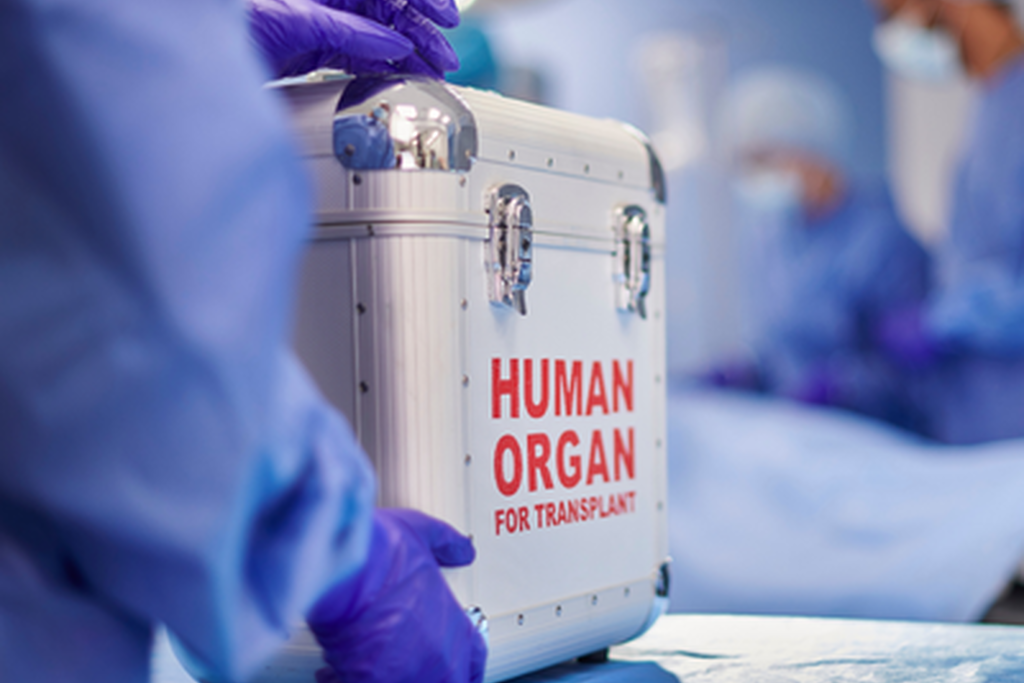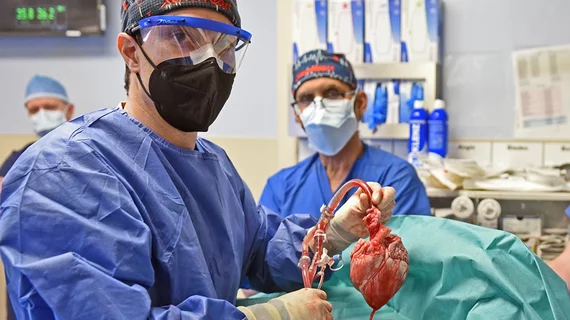A new organ transplant can bring life back, but do you know that there are risks beyond optimism?
Organ transplantation is considered one of the greatest human achievements that has saved millions of lives.
However, behind this medical miracle lie serious challenges, especially when it comes to certain organs whose transplantation operations are classified as “the most dangerous” due to their surgical complexity, high rejection rates, or life-threatening complications.
Not all organ transplant operations are equal in terms of danger and potential risks, as they vary depending on the type of organ transplanted, the source of the organ, and its compatibility with the recipient’s body.
Let’s learn together about the most dangerous types of organ transplants.

Lung Transplant: A Challenge Beyond Surgery
Initially, lung transplantation addresses severe, intractable conditions, such as chronic pulmonary failure, but this transplant is one of the most dangerous procedures. It may cause:
- Recurrent failure and the occurrence of blockages or leaks in the arteries and bronchi, threatening the safety of the respiratory system, may require additional surgery, dilation, or stenting.
- Infections, as evidence indicates that 21% of deaths within the first year after transplantation are due to infection.
- Chronic rejection, affecting about half of patients within 5 years, often appears as inflammation that ends in bronchiolitis obliterans syndrome, which reduces the patient’s chances of recovery.
Heart Transplant: A Battle on Three Fronts
Heart transplantation is considered one of the most complex and dangerous surgical operations due to the organ’s sensitivity and vital importance.
The patient needs lifelong close monitoring to avoid rejection of the transplanted organ and to take immunosuppressant drugs that may cause other health complications.
Although the success rate of heart transplantation reaches more than 70%, the operation carries significant risks such as organ rejection, infection, and blood vessel problems.
Liva Hospital in Turkey provides advanced techniques in heart transplantation with specialized care to ensure the best results.
Planning begins long before surgery, but risks remain after completion:
- Cardiac complications such as abnormal rhythms, inadequate heart filling, and blockages in transplanted arteries can lead to sudden death.
- Organ acceptance requires a large amount of immunosuppressant drugs, which increases the burden on the liver and kidneys and puts the patient at risk of chronic diseases.
Liver Transplant: A Delicate Balance Between Risk and Opportunity
The liver is a complex vital organ, and its transplantation is an operation that requires great expertise.
Liver transplantation carries risks such as severe bleeding, rejection of the transplanted organ, and serious infections.
The recovery period is also long and requires continuous monitoring.
In some cases, the liver is divided between two recipients (split transplantation), but it is not always the optimal choice due to the complexity of the operation.
Liva Hospital is distinguished by its expertise in performing liver transplantation with comprehensive patient care, but the risks may include:
- Acute and chronic rejection may lead to liver failure with biliary duct transformation and loss of the transplanted organ.
- Between 10-50% of first-year deaths are attributed to infections related to the procedure and the immune system.
- Biliary complications such as leakage or narrowing of the bile ducts require additional intervention such as cleaning or surgery.
Intestinal Transplant: The Most Dangerous Due to Immune Complexity
The intestines contain trillions of bacteria that increase the risk of infection after transplantation. The success rate of these operations is lower compared to liver or heart transplantation, and they require close monitoring to prevent complications such as organ rejection and gastrointestinal infections. Despite their rarity, intestinal transplants pose a major challenge:
- Frequent acute rejection causes bleeding or intestinal perforation.
- Infection probabilities reach dangerous levels, and about 21% of patients lose their lives within the first year.
Bone Marrow Transplant: The Immune Wall That Can Collapse Quickly
In bone marrow (stem cell) transplantation, what is known as “graft-versus-host disease” (GvHD) sometimes occurs:
- New cells may attack the patient’s skin, liver, or intestines, causing life-threatening diseases.
- Survival from acute disease is poor, reaching about 50% after 5 years in severe cases.
Common Risks: Infection, Cancer, and Psychological Aspects
- Infection: Low immunity after transplantation exposes patients to a high risk of viruses, bacteria, and fungi, leading to a mortality rate of up to 52% in some studies.
- Cancer: Immunosuppressive contact increases the risk of developing more than 30 types of cancer, doubling the risk compared to the general population.
- Personality changes: Recent reports indicate that 89% of individuals who received a heart or kidney transplant noticed changes in personality or taste – which may be part of toxicity or a vague concept of cellular memory.

Liva Hospital Turkey: Path Towards Higher Safety
Liva Hospital adopts the latest strict screening standards before transplantation, including:
- HLA compatibility and infection tests to ensure better compatibility and lower risks.
- Implementation of comprehensive infection prevention protocols (such as CMV, HBV, HIV) and continuous monitoring after surgery.
- Development of a low-harm immune plan, balancing intensive needs with long-term safety factors.
- Multidisciplinary follow-up after the operation, including doctors, pharmacists, and nutritionists, to reduce infection and side effects.
Conclusion
Organ transplantation continues to be an amazing medical achievement that restores hope to tens of thousands around the world.
However, the “most dangerous types of transplantation” – such as lung, heart, gastrointestinal, and bone marrow transplants – carry significant risks.
These range from surgical abortion, immune diseases, intractable infections, and even cancers.
Nevertheless, providing safer transplantation is possible in centers like Liva Hospital and requires careful patient analysis and a cautious balance between benefit and risk.
Frequently Asked Questions (FAQ)
What is the most dangerous organ transplant?
Intestinal and bone marrow transplants are considered among the most dangerous due to severe immune rejection.
Is infection the main cause of death after transplantation?
Yes, it is responsible for 13-52% of deaths within the first year, depending on the type of organ.
Does the increased risk of cancer last a lifetime?
Yes, immunosuppressant drugs continuously raise the risk of several types of cancer.
Why do patients’ personalities change after transplantation?
It may be a factor of drug effects or immune toxicity, and some theories refer to “cellular memory.”
How are risks reduced at Liva Hospital?
By following comprehensive pre-screening, preventive measures include vital medications, advanced monitoring protocols, and a post-transplant team.
Should I refuse transplantation due to the danger?
Not always. In cases of advanced organ failure, transplantation can save lives, provided a comprehensive assessment of individual risks and benefits.


